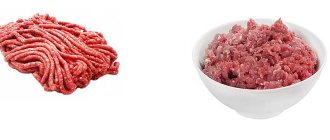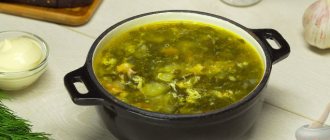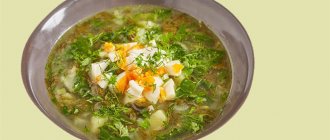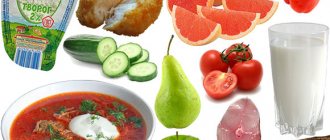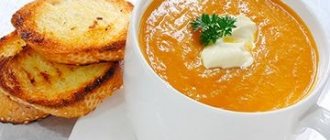Pork, beneficial properties:
Interesting fact: pork is the most easily digestible meat after lamb. Pork fat is less harmful to the heart and blood vessels than beef fat. 100 g of pork meat contains 2.98 g of fat, and the same amount of chicken contains 3.03 g.
In addition, pork contains a very large amount of vitamins from group B, compared to other types of meat: B1, B2, B3, B6 and B12. It contains a lot of protein, so nursing mothers are advised to include pork feet in their diet, as this meat promotes the formation of breast milk.
Of all types of meat, pork has the highest calorie content.
Calorie content of turkey meat. Dietary properties of turkey:
Turkey, the calorie content of which we will consider in our article, is a dietary type of meat, therefore its beneficial qualities are successfully used for the benefit of sick and weakened people. If we consider the content of vitamins and mineral components in it, we can conclude that turkey is one of the most balanced foods of animal origin.
The methods for preparing turkey meat are no different from those for any other type of meat. Turkey is stewed, baked, boiled, fried, smoked, etc.
If we consider a product such as turkey meat, then it should be noted that per 100 grams of turkey meat there is only 1 gram of fat. Turkey contains quite a lot of protein, approximately 20 grams. Thanks to such a unique ratio of nutrients required by our body, the calorie content of turkey is relatively low.
And further:
Turkey, like no other type of meat, contains large amounts of vitamin B3, phosphorus and selenium, as well as a very useful amino acid - tryptophan.
Turkey meat is healthy:
- for diseases of the heart and blood vessels (contains potassium and selenium);
- for diseases of the stomach and intestines (easily digestible);
- good antioxidant - serves to prevent various cancers;
- for allergy sufferers and children under one year of age (as it never causes allergies);
- for nervous disorders (contains iron, calcium, magnesium, zinc, vitamin E);
- for depression (thanks to vitamin B5).
This is due to the fact that turkey meat:
- promotes long and sound sleep;
- improves skin condition, prevents dryness and cracks (it contains a lot of vitamin E);
- strengthens bone tissue, teeth, nails and hair (calcium, fluoride, vitamins B, A, and D);
- increases male potency (zinc and again vitamin E).
There are no contraindications to eating turkey meat.
The permissible dose of turkey meat for an adult is from 150 to 200 g per day.
What is the disadvantage of pork meat?
Despite the beneficial properties and many B vitamins, pork, consumed frequently and in large portions, leads to disruption of metabolic processes in the body.
Often, the question of how many calories are in pork is not of much concern to those suffering from obesity, while they satisfy their hunger with large portions of boiled rather than fried meat. As a result, shortness of breath appears, serious illnesses develop and fat accumulates at a tremendous speed. Pork meat can be contaminated with dangerous parasites. Therefore, it is recommended to give it good heat treatment, otherwise a person may face helminth infection and even death.
Pork carcass parts and calorie content
- The first includes the less fatty parts of the animal: shoulder, loin (back), brisket, lumbar part, ham.
The second type is defined as those pieces that contain layers of fat: neck, shank, drumstick.
Below is information about the calorie content of raw pork carcass parts. calorie content per 100 g
- Calorie content of pork shoulder 250 kcal
- Calorie content of pork loin (back) 180 kcal
- Calorie content of pork belly 550 kcal
- Calorie content of the lumbar part of a pork carcass is 270 kcal
- Calorie content of pork ham 300 kcal
- Calorie content of pork neck 340 kcal
- Calorie content of pork knuckle 330 kcal
- Calorie content of pork shank 257 kcal
Fried pork: calorie content and harm of the product
Fried meat is known to be harmful to the body, since pork contains a lot of cholesterol. A lot of growth hormones also have an unfavorable effect on the body’s condition. The calorie content of fried pork increases as a result of adding large amounts of fat for frying. Therefore, it is important to know how to properly prepare meat dishes. For frying, you need to use a non-stick pan, as a result, less oil will be used for cooking, and your body will not suffer from the extra calories of pork.
Fried meat calorie content. Fried pork
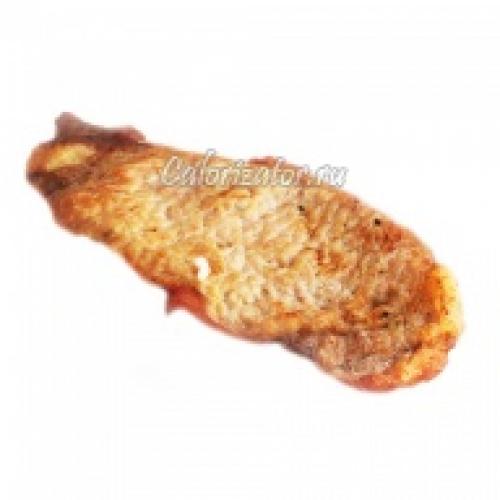
There are so many different recipes for roast pork. But the most important thing is to choose the right meat. It is advisable to use fresh meat, but if the meat is frozen, then you need to defrost it slowly at room temperature; it is not recommended to use meat with thick and dense fibers; it will turn out hard. The color should be pink, which means that the meat is juicy and fresh and young.
Calorie content of fried pork
The calorie content of fried pork is 489 kcal per 100 grams of product.
Composition and beneficial properties of fried pork
Pork as a product contains a truly unique combination of macro- and microelements, as well as B vitamins: B1, B12, B6, B2 and PP. It combines the correct proportions of phosphorus, zinc, magnesium and other elements that help remove heavy metals from the human body without consequences and very effectively (calorizator). Also, fried pig meat strengthens bone tissue and provides the body with protein and fat.
Fried pork in cooking
Method for preparing fried pork. Wash the meat, cut into even pieces (not thick) and beat with a wooden mallet for softness and juiciness. Next, break one egg in a separate bowl, pepper, salt and add a little water (calorizer). Pieces of meat are dipped into the resulting mass, then you need to coat the meat with breadcrumbs and fry in a frying pan, setting the heat to medium until cooked.
Calorie content of boiled pork and the ability to lose weight
Depending on the preferences of meat eaters, according to statistics, steak came in first place.
The calorie content of pork ribs is about 210 kcal per 100 grams of product. We hasten to inform those who love brisket that the calorie content of this part is approximately 300 kcal. Therefore, if your goal is to quickly get rid of those annoying kilograms, then it is better to abandon the high-calorie dishes listed above. Boiled pork, which has lower calorie content, is best for you. In dietetics, pork is not considered a low-calorie product, so count the calories of pork prepared in one culinary method or another, and also take into account the nutritional value of this product for the body. During adolescence, meat cannot be excluded from the menu.
Meat for weight loss
Often, when losing weight, the first thing they try to do is exclude meat from the menu: its calorie content is high compared to fruits and vegetables, and it contains fat. However, this is a wrong decision. During the cooking process, in most cases, meat becomes less nutritious as fat is rendered.
The product contains a number of nonessential and essential amino acids in the absence of carbohydrates. Moderate consumption of meat does not cause the formation of fat deposits, since most of the compounds are consumed immediately, and proteins promote weight loss.
With an integrated approach, meat dishes help achieve the desired result when playing sports. They contain enough amino acids to form muscle mass. Fibers require a lot of energy to maintain a satisfactory condition, so the total expenditure of calories increases, including during rest. Digestion of animal proteins also requires a lot of effort on the part of the gastrointestinal tract, so part of the nutritional value goes to processing the product.
The calorie content of boiled beef is 175 units per 100 g. You can achieve lower values by steaming the product and purchasing the leanest parts. Depending on the side dish, not all fats may be absorbed. Some of the energy will be spent on digestion. All factors together help achieve weight loss.
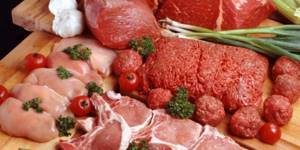
Raw beef calories
What is the energy value of raw beef? Per 100g of lean pulp there are 187 kcal. The nutritional value of the product is represented by the following figures:
- proteins - 18.9 g;
- fats - 12.4 g;
- carbohydrates - 0 gr.
If for some categories (varietal, sirloin and rump) these indicators are the norm, then in the fatty variety, which is usually removed from the lower outer part of the thigh, the calorie content can reach up to 230 kcal. There are also a lot of layers in the flank. The prime cut from the back, the point of the shoulder and the inside of the shoulder are the leanest parts.
If earlier cutlets were prepared from homemade minced meat, now they usually take purchased ones (for example, from Miratorg). Its calorie content should be looked at on the packaging.
Composition and beneficial properties of beef
Beef contains the following substances:
- Vitamin B3. Nicotinic acid dilates small vessels and capillaries, which helps improve cerebral circulation. The substance helps eliminate cholesterol plaques and reduces the load on the arteries. Eating beef helps normalize hormonal levels.
- Vitamin B4. Choline takes part in the functioning of the nervous system. With a deficiency, the likelihood of disturbances in its functioning increases. The vitamin helps cleanse the blood of excess fatty acids and cholesterol. Choline helps digest food and is involved in carbohydrate metabolism.
- Vitamin B5. Pantothenic acid promotes the synthesis of hormones by the adrenal glands. Eating beef helps prevent the development of colitis, arthritis, allergies and heart pathologies. The vitamin improves the functioning of the immune system and the formation of antibodies. The substance reduces cravings for alcoholic beverages and helps reduce the severity of adverse reactions after drinking them.
- Vitamin B6. Pyridoxine takes part in metabolism. It promotes proper oxidation of fats and proteins. The vitamin prevents the development of central nervous system diseases and skin pathologies. Pyridoxine acts as a natural diuretic. When there is a deficiency, a person’s limbs go numb and suffer from cramps and spasms.
- Vitamin B9. Folic acid is required for the creation and renewal of cells, therefore it prevents the development of autoimmune diseases and the occurrence of malignant tumors. The substance regulates the activity of the nervous system. This allows you to correctly alternate reactions of excitation and inhibition.
- Vitamin B12. Cobalamin is necessary to normalize hematopoietic function. It is involved in the process of formation of red blood cells.
- Vitamin K. The substance normalizes blood clotting and prevents blood vessels from calcification. The risk of developing liver cancer is reduced.
- Potassium. Stabilizes the heartbeat and is responsible for normalizing water balance.
- Calcium. Ensures normal muscle contraction and transmission of nerve impulses. Participates in the regulation of vascular permeability.
- Magnesium. Responsible for the transmission of nerve impulses and the processes of muscle contraction and relaxation. Maintains the condition of bones and teeth, protects them from damage.
- Sodium. Normalizes water-salt balance. Sodium promotes food digestion because it activates enzymes in saliva and pancreatic secretions.
- Phosphorus. Participates in fat metabolism and the synthesis of essential amino acids. Without phosphorus, normal muscle and brain activity is impossible.
- Iron. Takes part in the formation of hemoglobin. Improves the functioning of the immune system and helps provide the body with oxygen.
- Manganese. Improves the absorption of ascorbic acid and promotes normal glucose perception. Regulates its level in the blood. With a deficiency, food digestion worsens, the functioning of the nervous system and brain is disrupted.
- Copper. Required for the conversion of iron into hemoglobin and is indirectly involved in saturating the body with oxygen. Copper promotes the synthesis of the happiness hormone.
- Zinc. Necessary for the formation of bone tissue and hair. Allows for more efficient use of vitamin A.
- Selenium. Prevents the occurrence of tumors and improves the functioning of the immune system.
The calorie content of beef is 187 kcal, the nutritional value of veal is even lower. 100 g of product contains 17-21 g of protein and 2-23 g of fat, depending on the category and fatness of the cow. If you are trying to maintain the optimal balance of BJU, but you are confused by how many calories there are in pork, replace it with beef.
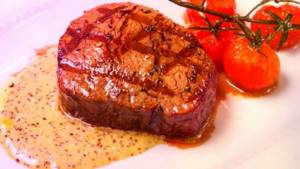
Calorie content of boiled beef
When planning the menu for the day, many include boiled meat rather than fried thick sirloin. But how many calories are in boiled beef?
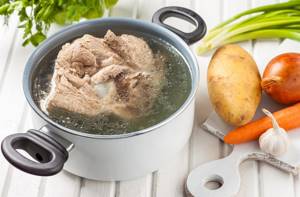
Photo source: shutterstock.com
100 grams contain 232.4 kcalories, and BZHU has the following indicators:
- proteins - 24.3 g;
- fats - 15 g;
- carbohydrates - 0.22 gr.
But the figures given are valid for lean meat. If it has layers of fat, which sometimes occurs, or is smoked and boiled, then the energy and nutritional value will be higher.
Boiled meat calorie content. Nutritional value of the product
The calorie content of beef and its nutritional value mainly depend on the type of meat, that is, which piece of animal carcass is prepared and on the cooking option.
It is important to remember that during frying, any piece, including fillet, absorbs all the sunflower or vegetable oil. This increases calorie content due to fat. It turns out just a fat bomb that will hit the waist, hips and stomach. In particular, the liver will suffer from fried foods, especially deep-fried ones.
To improve the quality of calorie content, beef should be boiled, baked in its own juices, or use a steamer.
How many calories are in beef?
Average caloric content and nutritional value of boiled beef per 100 grams:
- Calories = 201;
- Proteins = 18g;
- Fat = 14.3g;
- Carbohydrates = 0g.
The percentage of proteins, fats and carbohydrates is respectively: 36% / 64% / 0%.
It is worth remembering that these are average values, and the amount of fat in lean meat is lower and more protein. Protein is necessary for building high-quality muscles, which is extremely important for athletes and those wishing to lose weight. For a growing child's body, this ratio of proteins and fats in combination with complex carbohydrates (cereals) promotes rapid growth, strengthening the immune system and bones. The presence of animal fats is beneficial for the female body. Without the correct amount of fat in a woman’s body, the cycle is disrupted and metabolism deteriorates. Fat consumption must be limited in the diet of any person, regardless of gender and age.
Calorie content of beef stew
An even lower calorie dish is beef stew, which goes well with steamed vegetables.

Photo source: shutterstock.com
How many calories are in 1 serving of this dish? Per hundred grams comes out to 220 kcal. In this case, the BZHU is represented by the following ratio:
- proteins - 18.3 g;
- fats - 13 g;
- carbohydrates - 0.07 g.
This stewed variety is ideal for a diet.
Calorie content of lean beef
Parts of carcasses that are sold in pieces without layers of fat are considered lean. At its core, it is a fillet that is recommended to be cooked without the use of oil. The product is considered dietary and even after cooking is able to retain most of its beneficial properties.
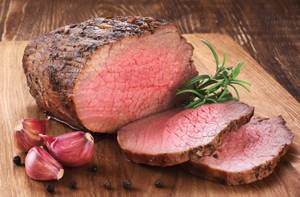
Photo source: shutterstock.com
So how many calories are in lean beef? 100 grams of this product contain only 158 kilocalories, and BJU is considered ideal for weight loss. This is 7.1 g of fat and 22.2 g of protein. There are no carbohydrates here at all.
BJU in chicken
It is impossible to give an exact answer to the question of how many calories are in chicken meat. The average value is 165. Chicken has less calories than beef, but the chemical composition of red meat is different. When losing weight and eating right, it is recommended to include both varieties in the menu.
100 g of boiled chicken contains 25 g of protein and 7 g of fat. This allows the product to be used as a source of amino acids for weight loss and muscle building. The most nutritious parts are considered to be the skin (212 kcal), wings (186 kcal) and thighs (185 kcal). In order to reduce weight, it is recommended to eat chicken fillet. Nutritional value 100 g - 110 kcal.
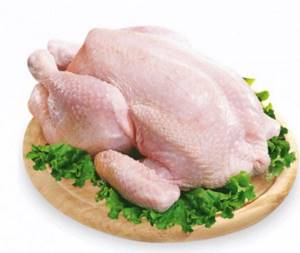
Composition and nutritional value of beef
What is the main advantage and biological value of this type of meat? This variety has a balanced chemical composition. Thanks to it, beef meat products provide quick satiety. What substances are included in the chemical composition of this type of meat?
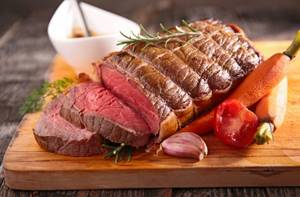
Photo source: shutterstock.com
It is represented by the following substances:
Also, the rich mineral and vitamin complex contains copper, vitamin PP and other substances beneficial to the body of an adult and a child. At the same time, beef meat does not provoke allergies. That is why it is often introduced into baby food.
Daily intake of beef
What piece can you eat a day so that it is healthy and does not harm the body? The daily intake is 150 grams for an adult.
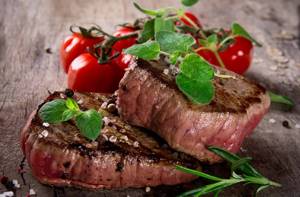
Photo source: shutterstock.com
For children, this figure is less and is only 80 grams. However, doctors strictly do not recommend including beef in your daily diet. But you should not use it more than 3-4 times a week.
The benefits and harms of beef
What are the beneficial properties of the product? How is it good for the body of a man, woman or child? The benefit of beef lies in its high protein content. Due to this, it is able to satiate a person as quickly as possible without harming the figure. At the same time, the meat contains very little fat, which reduces the load on the kidneys, heart, liver and blood vessels.

Photo source: shutterstock.com
Beef can be safely included in the diet during weight loss and for pregnant women. The amino acid composition of the product is absolutely safe. There are other positive properties of tenderloin, which provide:
- improvement of metabolism;
- removing harmful cholesterol from the blood;
- strengthening the walls of blood vessels;
- increase in muscle mass.
Another product allows you to normalize the functioning of the gastrointestinal tract, effectively restores blood flow, and provides high-quality prevention of anemia. Beef stimulates active brain activity, strengthens hair, bones, nails and teeth, and normalizes the functioning of the central nervous system.
It is recommended to include beef in the menu of people who actively train or whose work involves heavy daily loads. It will prevent the body from becoming exhausted. It is also worth introducing it during the recovery process after injuries, operations, loss of large amounts of blood and serious illnesses.

Photo source: shutterstock.com
But beef is not always healthy for everyone. For some, it can only bring harm. It is important to consume meat in moderation, otherwise excessive intake of protein into the body can impair the optimal functioning of the stomach, liver and kidneys. You may also encounter other problems:
- formation of stones;
- decreased immunity;
- increased risk of esophageal cancer;
- failure in the functioning of the myocardium;
- inflammation of the pancreas, kidneys and other organs.
Also, excessive consumption of meat can provoke the formation of cholesterol plaques, which lead to blockage of blood vessels.

